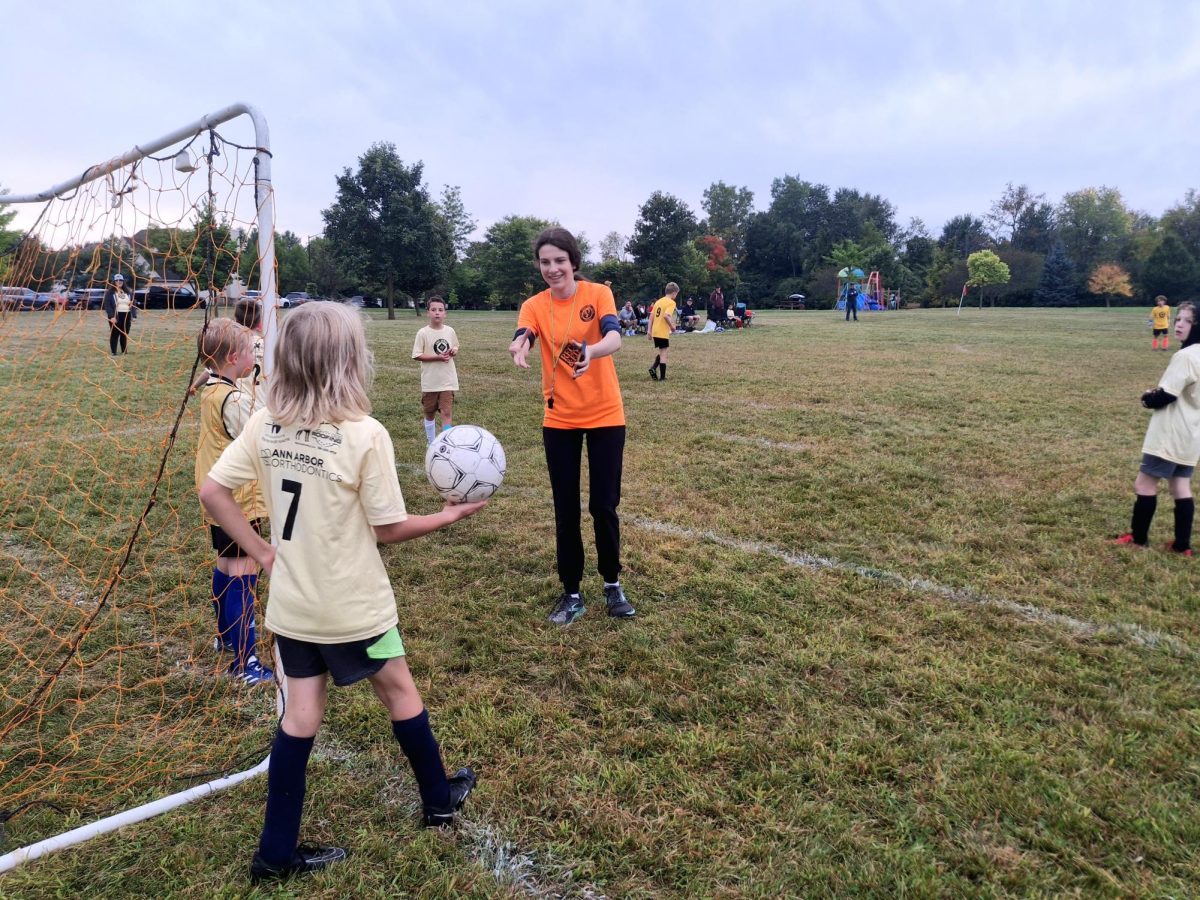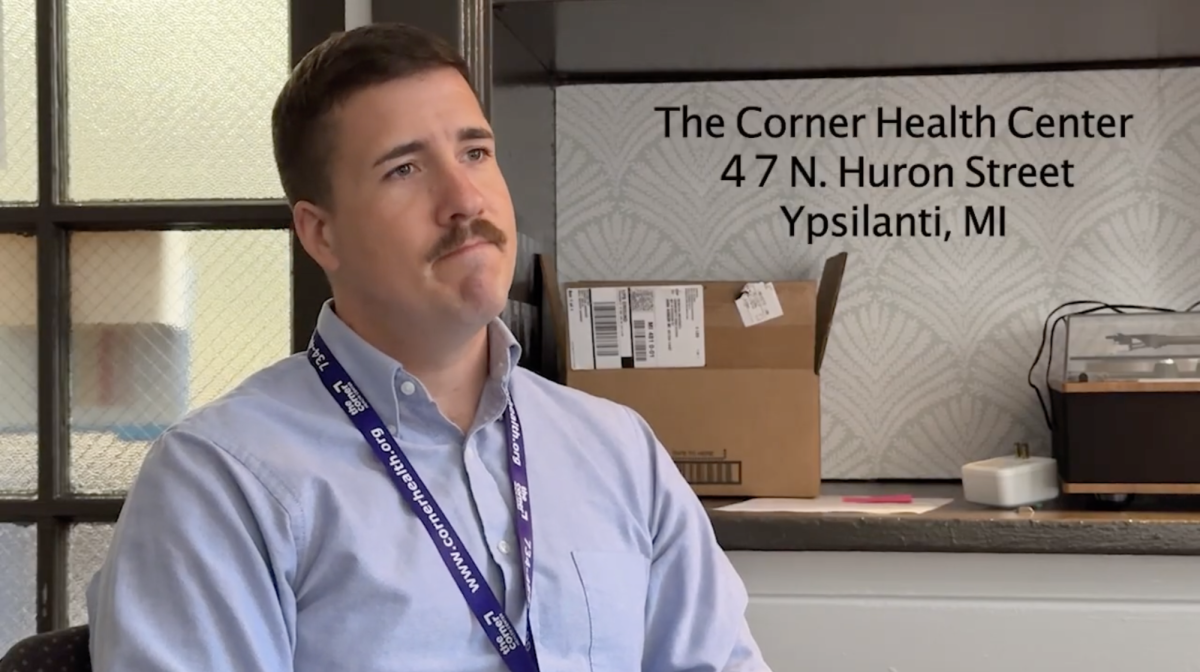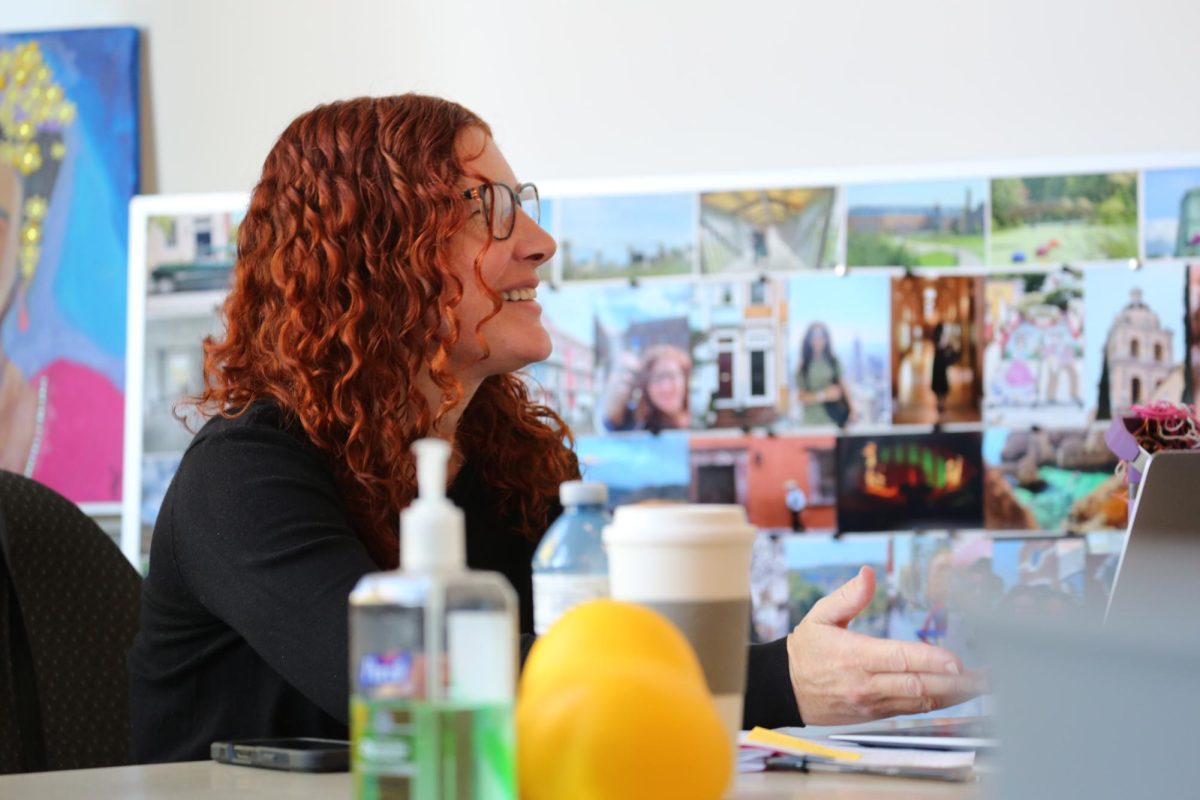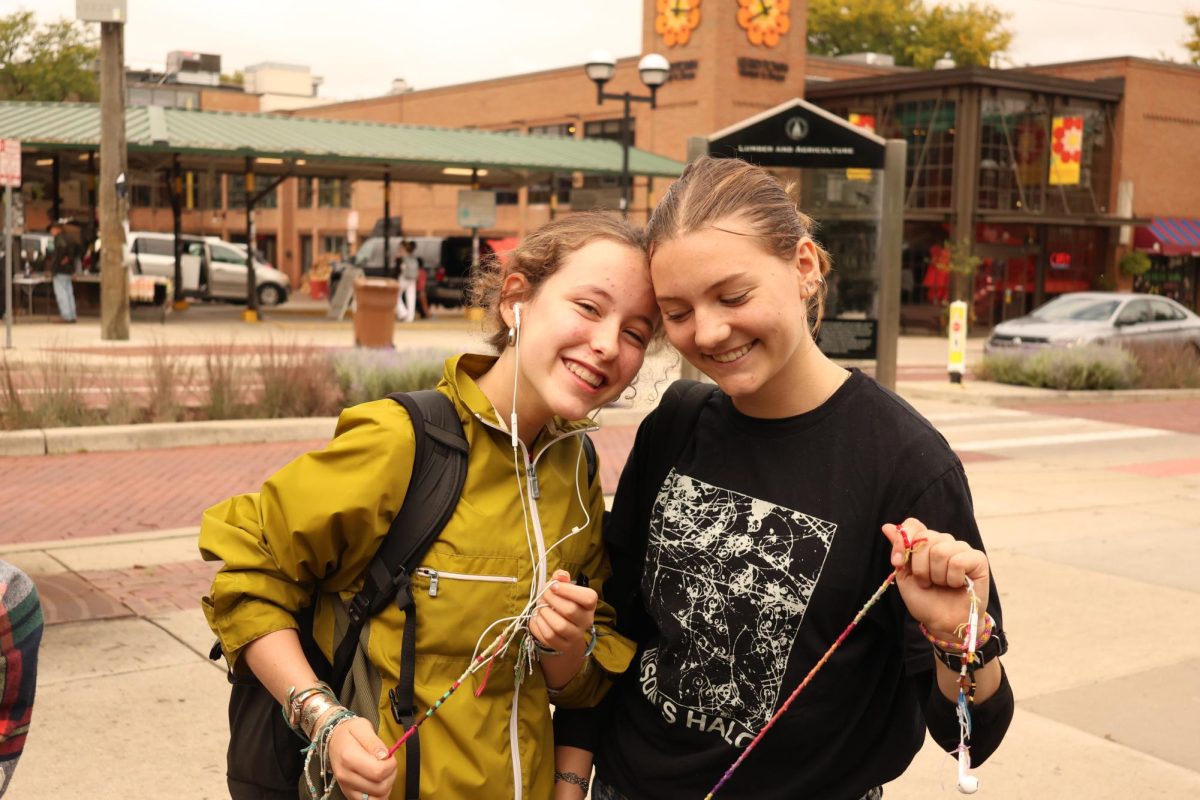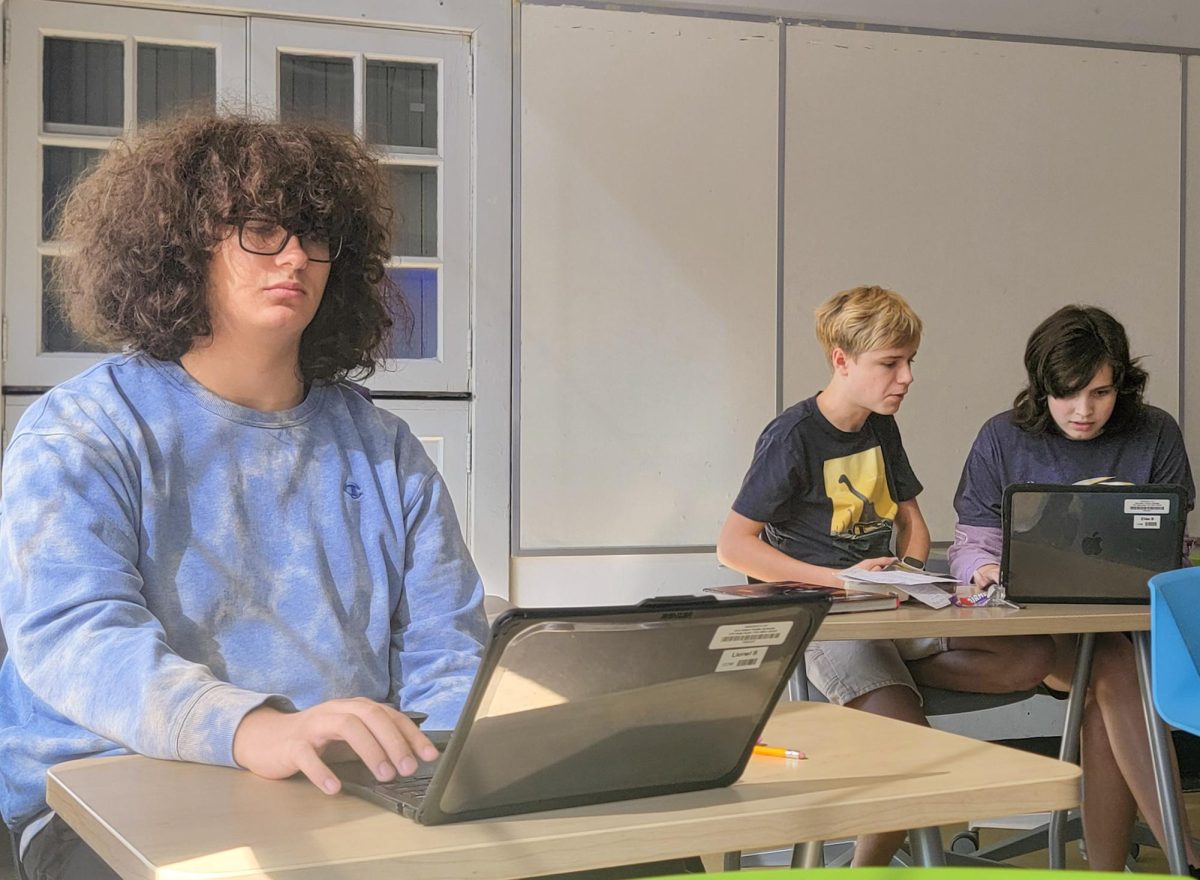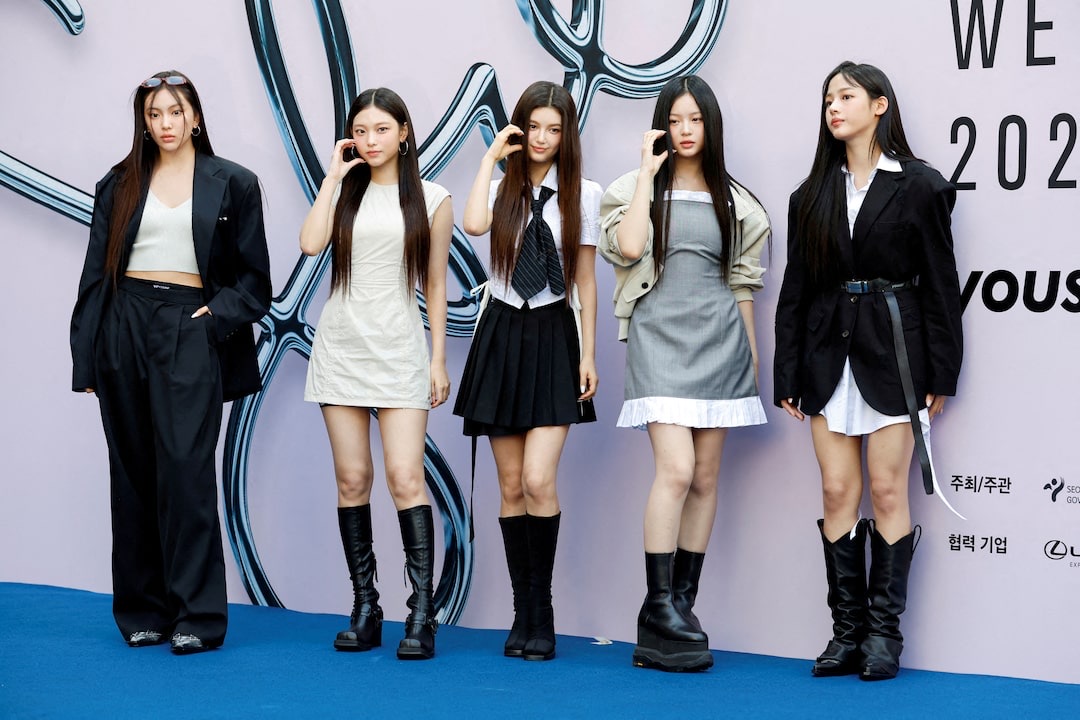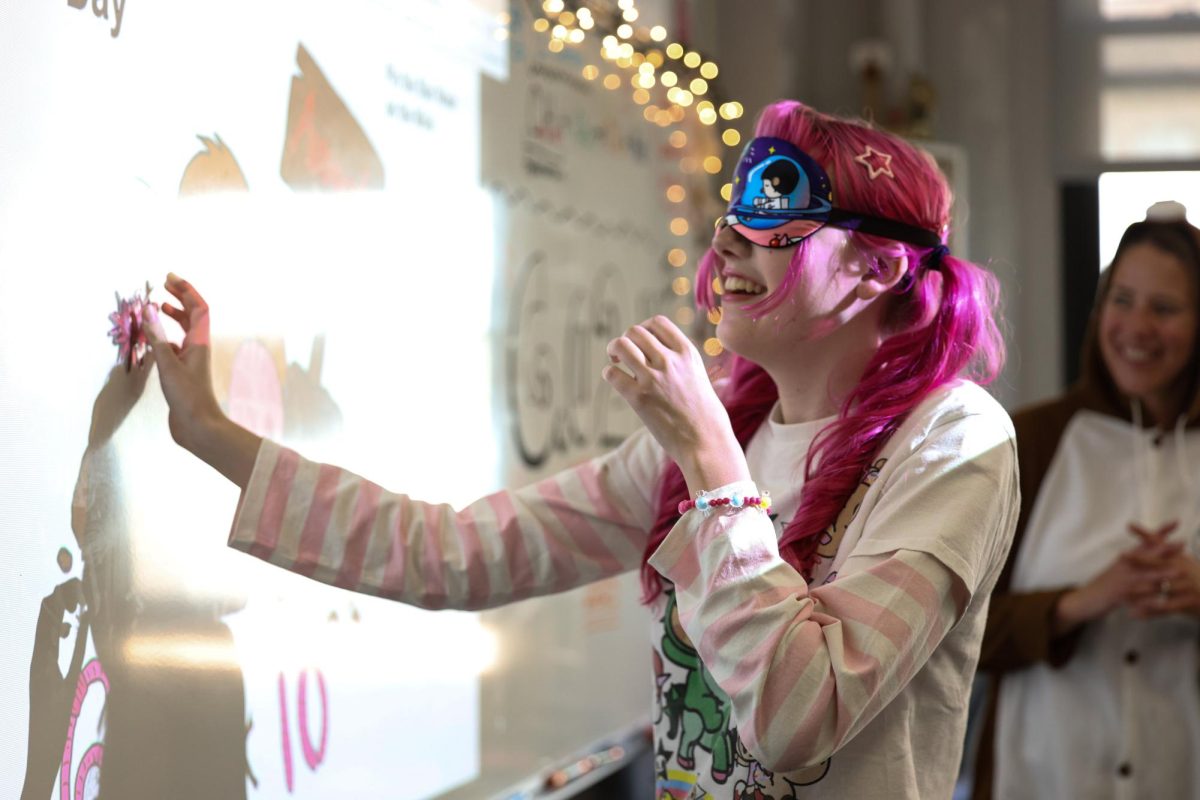What exactly is the mysterious green gadget that’s been appearing around town?
“I noticed them while walking from the bank after work,” said Merideth Freiheit, a freshman at Community High School. Etsie Arruda, a senior at Community, said, “I was driving someone to a WCC class the other day, and he just pointed them out…” Both students are referring to a new feature of Ann Arbor streets: the Whirlydoodle.
These clever, cute inventions have been showing up around the area during the last few months. Despite the Whirlydoodles’ increased presence downtown, some people are still confused about what exactly they are and what they are supposed to do.
“My boss told me a little bit about them and she said they were to conserve energy I think, or something like that…. [It] wasn’t quite clear…” explained Freiheit. Senior Melissa Krienke expressed similar concerns, saying, “I have noticed them. I’ve always wondered what they were, but I’ve never found out.”
The miniature wind turbines, many of which are mounted on light posts, use the energy they collect to power the LED lights on their blades. As wind speeds pick up, the lights’ colors change, reflecting the speed of the wind. Though the power they make isn’t used to power the street lights, the everyday use of green energy and public placement helps people warm up to the energy source.
Tim Jones, a lawyer-by-day and inventor-by-night, created the Whirlydoodles. Jones said that the idea for his invention came from “tinkering, and learning, and experimentation with different tools and technologies.” Coming up with the idea was far from the hardest part, though – after the initial prototype, the invention required testing and refinement so the final product could be optimized.
Dave Konkle, the Energy programs director for the Ann Arbor Downtown Development Authority, teamed up with Jones to get the Whirlydoodles up in town. Konkle said via email, “I was the Energy Coordinator for the City of Ann Arbor about 3-4 years ago when Tim stopped by my office at City Hall to show me a prototype of his new invention… It was obvious that the Whirlydoodle was both fun and educational.”
According to Jones, putting the devices in urban areas was originally a test to see if they’d work – he’d thought that the ambient lighting, dirt, and turbulence would prevent them from working. He thought that “people weren’t going to be able to see them.” However, he and Konkle decided to try them in the city.

Though they didn’t ask permission to start putting up the devices in a “pirate/gonzo operation,” Konkle said that, “Because I had worked for the City for 20 years and [had] become a kind of icon (Energy Czar) once people found out I was involved, they didn’t worry.”
Installing the Whirlydoodles ended up being a fairly efficient process. “The actual project was actually pretty quick…” explained Jones, “The first one took hours to put up…. but once we figured out that there was a simple and practical way of doing it, it only takes 10 minutes to put one up.”
Jones and Konkle share big plans for the gadget. “Phase 1 of the project was to install Whirlydoodles around town and see what happens. We consider Phase I to be a terrific success. Phase 2 of the project is to do a major art/science installation of Whirlydoodles somewhere in Ann Arbor. This ‘installation’ would consist of 1,000-2,000 Whirlydoodles in a field that would enable viewers to ‘see’ the wind,” explained Konkle.
“I want to create this large landscape art thing where you can actually see the patterns of wind move across the landscape,” Jones said. “I believe that when this is set up on a hillside, a breeze will come along you’ll see… red and blue and colors rippling across the hillside and as the speeds vary and change… The wind isn’t like some uniform fluid… It’s like a stream: There are currents and turbulences and different velocities in different directions.”
For the most part, public response has been positive. Of the more than 350 people who’ve responded to the survey on the Whirlydoodles’ site, about 95% love the devices. Konkle described the response as “important and very gratifying.” Jones said, “[The positive response is] very high for any type of public project, partly I think because it involves wind energy.”
While the project has received mostly positive responses, it is not without negative feedback. “We’ve gotten some comments – obviously we can’t make everybody happy – that may reflect some of the misperceptions about wind energy… This is a useful tool for discussing wind energy… As we learn about technology we learn that some of our perceptions are wrong, and we learn that there were some things we didn’t know about them…. then we learn how to work with that technology,” said Jones.
Along with the visual entertainment provided by the devices and the conversation-starting aspect, Jones sees his invention as an educational tool. Jones said, “It’s not only [entertaining]; it’s educational. You don’t always stop and feel the wind… I think it’s important… to kind of connect with the environment… I think there’s a lot of educational value because here’s something small that kind of inspires these people to think about ‘Oh, that’s kind of cute and somebody thought of that, and what will somebody think of tomorrow, what [else] will somebody invent?’”

The Community High response seems to take both sides of the issue.
Some students noted negative aspects of the devices. “They’re cute, but they make kind of annoying sounds while you’re walking… I like having them there….” said Freiheit. Krienke had concerns as well. She said, “The times I’ve seen them in my car… I thought they were distracting ‘cause it was at night and they light up, but when I saw them while I was walking, I thought they were cool and I was interested.”
Others saw nothing wrong with them. “I think they look cool, and if they’re for green energy, then they’re cool,” said Sophia Camp, a CHS freshman. Arruda said, “I didn’t even notice them. They’re really small, so they’re not like obtrusive or anything.” While their presence didn’t bother her, she had a few ideas about other uses for the Whirlydoodles, including using the power they collected to power street lights.
Courtney Kiley, a science teacher at Community and the Ecology Club’s advisor, was enamored of the Whirlydoodles. “Now that I know they don’t actually power the streetlights, I still think that the potential is there, and I also think they’re cool and funky…. it’s just cool to see someone spend time to put those out there for other people to enjoy and to help other people learn about wind power. People are definitely like, ‘what are these things?’ and a lot of the push in science now is to go into engineering, and it could definitely get kids interested and people interested in that field and there’s so much potential for wind power, especially in Michigan with the Great Lakes and everything.”
For more information, go to whirlydoodle.com.
Photos by Gabrielle Vuylsteke.



